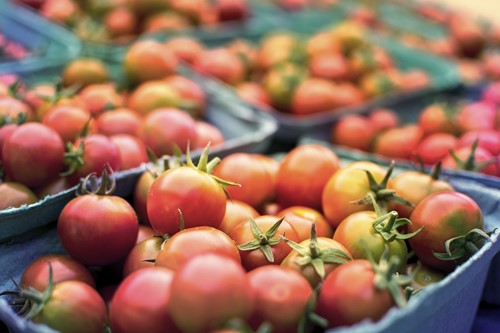
When choosing plants to grow in your garden, it’s crucial to know what will survive in your particular climate. Luckily, the United States Department of Agriculture developed a special map of numbered “zones” to help farmers and gardeners make the best choices. While you might have seen the term, it’s important to understand what they mean and how they can help you in your own gardening efforts.
What Are USDA Hardiness Zones?
The USDA hardiness zone system helps us to determine the optimal growing conditions for a type of plant. There are 11 different zones across the map of the contiguous United States and Southern Canada. The zones are based on average annual temperature (in Fahrenheit) and vary in size depending on the particular region. A higher zone number means a higher average temperature.
How Can This Info Help Me?
To use this information, the best place to begin is by identifying the zone you live in. Each zone is broken down by 10-degree differences with “A” and “B” sections to narrow the temperature down further.
To figure out your climate zone, you can consult the USDA map or use one of the search functions many online resources provide. Once you know your zone, you can look for plants and seeds that are recommended to grow in your area—and avoid those that are not. Your zone will tell you what will survive in your average annual temperature, so you know ahead of time that it’s worth the time and resources to plant.
It is possible to grow plants that are not labeled for your zone, but it’s difficult. Agricultural experts recommend beginners stick to their own zones unless they have a way of creating a “microclimate” at home, such as a greenhouse. For some plants, like edible crops, even if the plant can grow out of its recommended zone it might not produce the same quality or amount of fruit, vegetables or otherwise.
Other Things to Consider
While the USDA hardiness zones are standard practice in agriculture and gardening, it’s important to take other environmental factors into account. There is a competing system called the “sunset climate zone” system, which adds in more factors than temperature alone. Sunset zones include things like rainfall, wind, average humidity and extreme seasonal temperatures.
It is also worth noting that while accurate and trusted today, the last official version of the map is from 2012. Because of global shifts in average temperature and climate, the map might look a little different today. That said, there are occasional updates, but for everyday gardeners we can still consider the rough estimates accurate enough to help with planning a successful and healthy garden.
For more information, consulting local gardening or agriculture experts for additional advice is never a bad idea. After all, the USDA hardiness zone map is only a starting point and provides lots of room for experimentation. Research your plant choices carefully and you’ll be able to make the best informed decisions for your situation.
About the Author

Sandy Malbrue
Hi, I'm Sandy Malbrue and I'd love to assist you. Whether you're in the research phase at the beginning of your real estate search for representation or you know exactly what you're looking for, you'll benefit from having a real estate professional by your side. I'd be honored to put my 21 years real estate experience to work for you. Be it to gain wide exposure for your home with my marketing plan, negotiate offers or manage the transaction once you've accepted an offer, in a way that will get you the best price and cause the least amount of disruption to you life as possible.
If you are a buyer, allow me put those skills to work for you to help with the pre-approval process, work with you to locate and arrange for you to view homes of interest to you , and negotiate your offer. Once you have an accepted offer, I will help you arrange inspections, I will manage the transaction for you, from helping to arrange for inspections to keeping you up to date on contingency removals and walking you through the process to a new set of keys.
Let's do this!